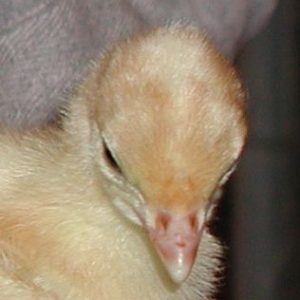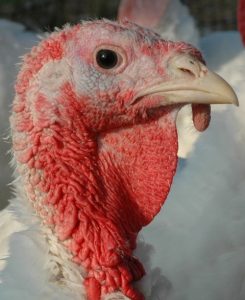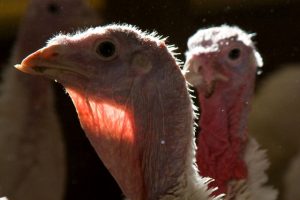Written by: Dr. Jacquie Jacob, University of Kentucky
The practice of beak trimming of poultry should be used only to prevent feather pecking and cannibalism when management practices (genetic selection, management of light, and management of nutrition) are not sufficient. Only trained and monitored personnel should perform beak trimming, using proper equipment and procedures.
The beak of most poultry species is a very specialized organ. It contains many sensory receptors and glands that help the animal engage in activities such as searching for food and preening feathers. A bird also uses its beak as a weapon for offensive and defensive behavior. The center of the beak consists of bone, and the outer layer consists of horny tissue that is thicker toward the tip of the beak. The tissue between the bone and the outer horny layer contains many nerves. Figure 1 shows a beak that has not been trimmed.
Poultry producers use beak trimming as part of an overall strategy to reduce feather pecking injuries in groups of poultry. Beak trimming (frequently referred to incorrectly as debeaking) involves the removal of approximately one-quarter to one-third of the upper beak or both upper and lower beaks of a bird. The tip of the beak is blunted so that the natural behavior of chicks to peck at each other does not result in significant damage to the birds. Beak trimming has been used with many types of poultry, including laying hens, turkeys, ducks, and quail.
The different methods of beak trimming are categorized as mechanical, hot-blade, electrical, and infrared.
- Mechanical – A simple blade or scissor device, such as secateurs, is used to trim the beak.
- Hot-blade – A heated blade is used to trim the beak.
- Electric – An electric current is used to damage the beak so that the tip falls off.The adverse effects of beak trimming of chicks of egg-laying strains at 1 to 10 days of age are offset by the benefits of reducing cannibalism. Beak trimming of younger birds appears to eliminate the long-term chronic pain that can occur in the stump of the beak of an older bird whose beak is trimmed.
- Infrared – Infrared light is used to damage the beak so that the tip falls off. (See Figures 2 and 3.)
Any of these systems involves some pain to the bird. However, the British Farm Animal Welfare Council endorses the infrared method as a preferred choice for beak trimming in terms of animal welfare. With the infrared method, there is no open wound, more likelihood of preventing beak regrowth, and consistent removal of the tip of the beak without evidence of the bird’s suffering lasting stress or pain.




